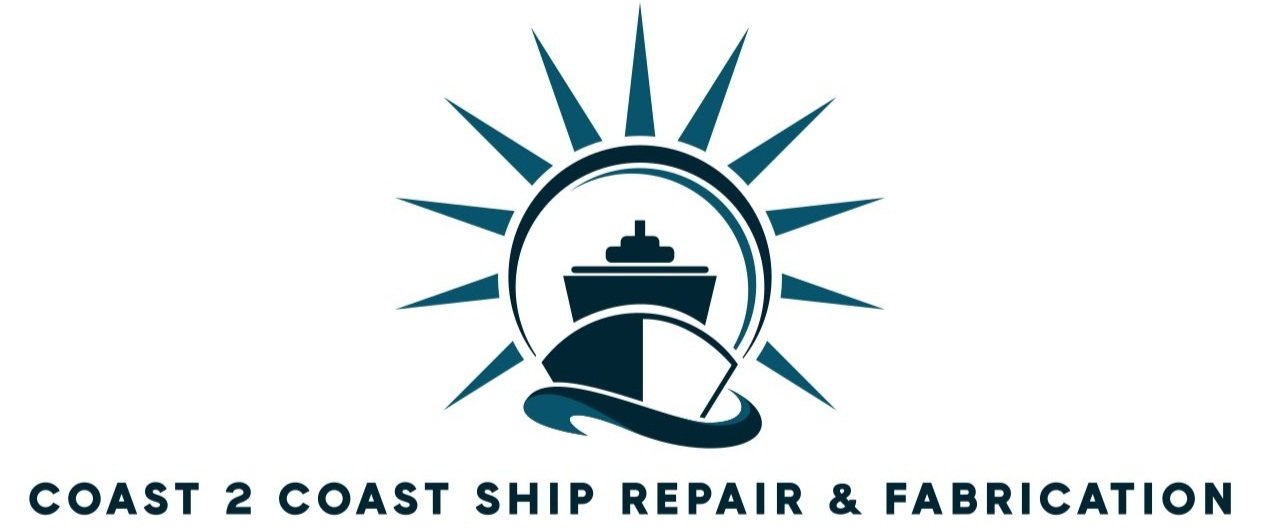Pipe Welding & Pipe Fitting Services
Pipe Welding is a specialized process used to join metal pipes together using various welding techniques, ensuring strong and leak-proof connections essential for transporting fluids and gases.
Pipe fitting(s) are essential components used in piping systems to connect, redirect, or modify the flow of fluids (liquids, gases, or slurries). They help in joining pipes of the same or different sizes, shapes, and materials, ensuring efficient and secure transport of substances. Common types of pipe fittings include elbows, tees, reducers, and caps, which are widely used in both plumbing and industrial applications.
P1 Piping Systems
Non-critical piping systems that are low-pressure and low temperature.
Typical Characteristics:
Operating pressure is usually less than 150 psi
Operating temperature is below 200°F
Failure would not endanger the ship or crew
Examples:
Drain systems
Vent lines
Potable water
Sanitary waste lines
Testing Requirements:
Generally visual inspection and/or operational test (flow check)
No hydrostatic or high-pressure test required
P1 = Low-risk, low-pressure (simple test/inspection)
P2 Piping Systems
Moderate- to high-criticality systems that are higher pressure, higher temperature, or more vital to ship operations.
Typical Characteristics:
Operating pressure 150–1000 psi
Operating temperature up to 650°F (varies by material and system)
Failure could impair operations or present a hazard
Examples:
Firemain systems
Fuel oil service and transfer
Hydraulic systems
Lube oil systems
Steam systems (in some applications)
Testing Requirements:
Hydrostatic testing or air test at prescribed pressures (per system specs)
Visual weld inspections and often NDT (Non-Destructive Testing) such as radiography or dye penetrant
P2 = Higher-risk, higher-pressure (requires hydro or NDT testing)
Materials for Piping Systems
1. Stainless Steel (CRES)
Characteristics:
Corrosion-resistant, durable, strong at high pressures/temperatures.
Common Grades in Ship Work:
304L, 316L, and higher alloys depending on service.
Typical Applications:
High-pressure air systems
Potable water systems (due to corrosion resistance and cleanliness)
Hydraulic lines
Fuel and lube oil piping in certain environments
Why Used:
Long service life, resistance to seawater and chemicals, maintains strength in harsh environments.
2. Carbon Steel
Characteristics:
Strong, cost-effective, widely available. Susceptible to corrosion if unprotected.
Common Forms:
Seamless and welded pipe.
Typical Applications:
Low-pressure steam systems
Firemain systems (when internally coated)
Machinery systems not exposed to seawater
Structural supports, foundations, and ship framing
Why Used:
High strength-to-cost ratio, easy to fabricate and weld. Must be properly coated/preserved.
3. Copper-Nickel (CuNi)
Types Used in Shipbuilding:
70/30 (70% Cu, 30% Ni) and 90/10 (90% Cu, 10% Ni).
Characteristics:
Excellent corrosion resistance, especially in seawater. Good biofouling resistance.
Typical Applications:
Seawater cooling systems
Firemain (Navy often requires 90/10 or 70/30 CuNi)
Ballast systems
Desalination and heat exchanger tubing
Why Used:
Superior resistance to saltwater corrosion, long-term reliability, required by NAVSEA for critical seawater systems.
4. Aluminum
Characteristics:
Lightweight, corrosion-resistant, non-magnetic, but not as strong as steel.
Typical Applications:
Superstructures (to reduce top weight on ships)
Small boat hulls and decks
HVAC ducts and light piping systems
Electrical cable trays and supports
Why Used:
Reduces weight, improves fuel efficiency, and is easier to handle. Requires special welding procedures (MIG/TIG).
✅ Quick Reference:
Stainless Steel = Corrosion resistance, clean systems, high strength
Carbon Steel = Strong, cost-effective, needs coating
Copper-Nickel = Best for seawater systems, anti-corrosion
Aluminum = Lightweight, corrosion-resistant, used in structures & light-duty piping
Bimetal Piping
Bimetal materials are made by joining two different metals—typically by welding, cladding, or explosion bonding—to combine the strengths of each material. In ship systems, they are often used when one metal is resistant to corrosion while the other provides mechanical strength or cost efficiency.
Common Types of Bimetals in Ship Piping
Carbon Steel / Stainless Steel (CS/SS)
Carbon steel provides strength, stainless steel offers corrosion resistance.
Piping in seawater or fuel oil systems where only the inner surface is exposed to corrosive media.
Heat exchangers and fittings.
Carbon Steel / Copper-Nickel (CS/CuNi)
Carbon steel for structural strength; CuNi for seawater corrosion resistance.
Firemain, seawater cooling systems, and condenser piping.
Common in Navy ships where CuNi is required internally but steel is acceptable externally.
Stainless Steel / Copper-Nickel (SS/CuNi)
Combines the chemical resistance of stainless steel with the anti-fouling/seawater resistance of CuNi.
Heat exchangers, evaporators, and piping exposed to both seawater and chemical systems.
Aluminum / Stainless Steel or Aluminum / Copper-Nickel
Aluminum for lightweight construction; the other metal for corrosion resistance in seawater.
Specialized lightweight piping or fittings on high-speed vessels or superstructures.
Advantages of Bimetals
Combines corrosion resistance of one metal with strength/cost-effectiveness of another
Reduces material costs compared to making the entire system from high-end alloy
Improves service life in corrosive environments
